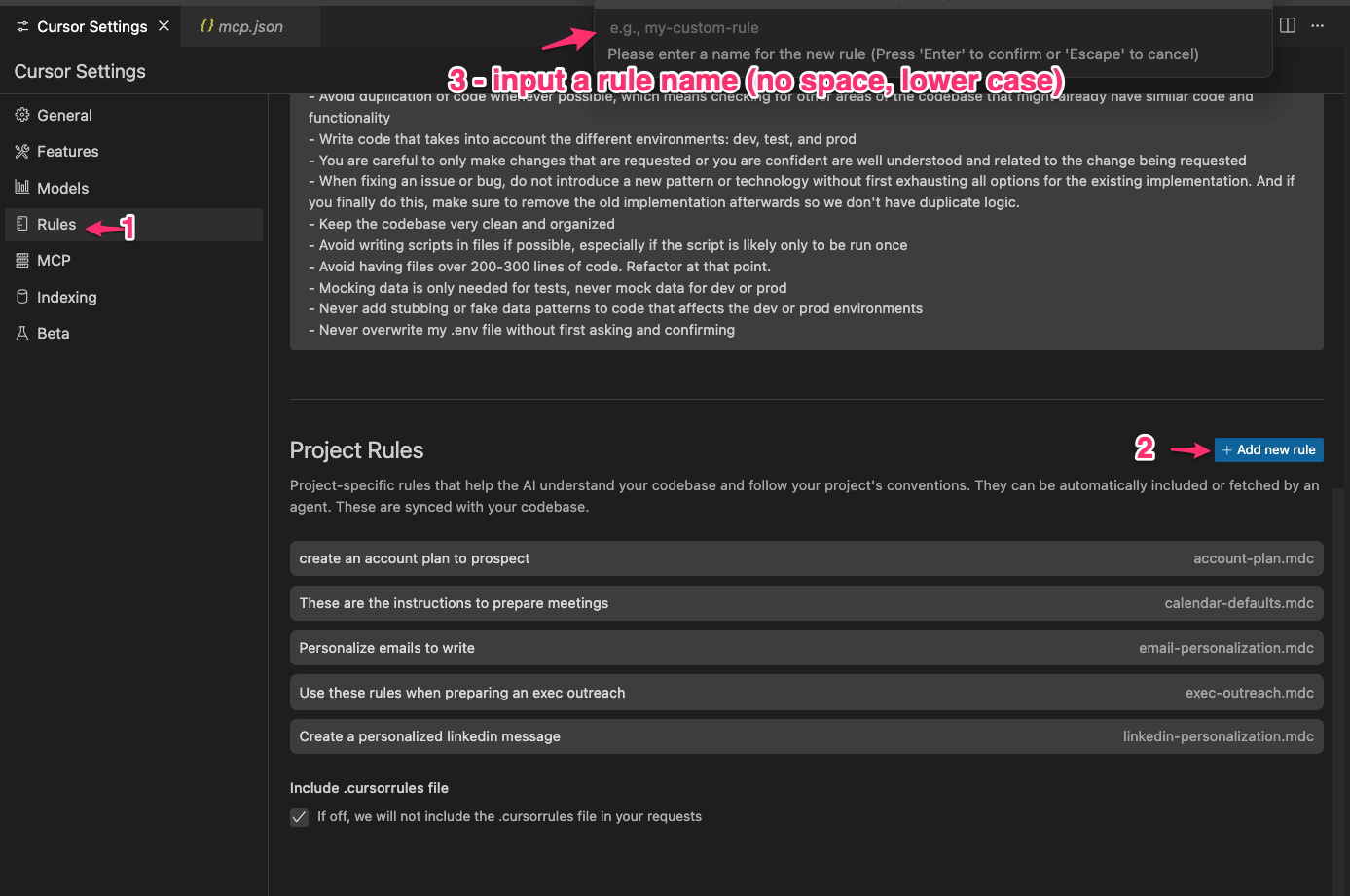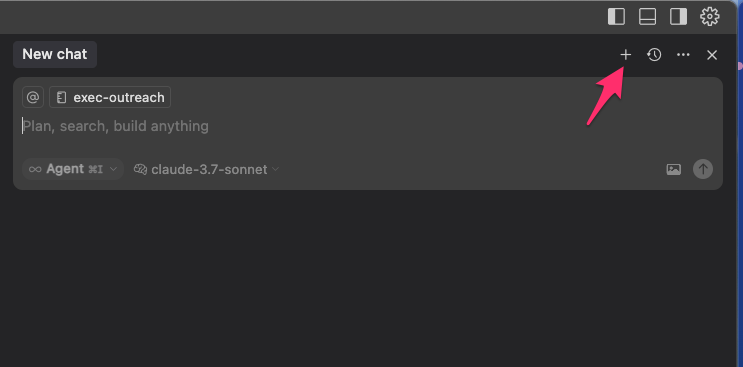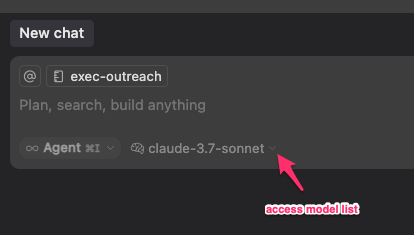Guide to Vibe Coding with MadKudu MCP & Cursor
A step-by-step guide to setting up and using Cursor with MadKudu's Model Context Protocol for supercharged development

Guide to Vibe Coding with MadKudu MCP & Cursor
Experience a whole new level of productivity with AI-powered coding and insights at your fingertips.
This guide will help you set up a powerful AI development environment that combines the best of Cursor (AI-powered code editor) with MadKudu's Model Context Protocol (MCP) for enhanced productivity and insights.
Pre-requisites
Please make sure your system is up to date and reboot your laptop (cough, cough Chloe…).
1. Setting Up Your Environment
1.1 Install Cursor
Download Cursor, create an account, and follow the installation steps. It's pretty straightforward.
Cursor is an AI-first code editor built on VS Code that lets you chat with your codebase and execute commands through natural language.
1.2 Configuring Cursor for Maximum Productivity
Enable Yolo Mode
This will allow Cursor to execute commands on your behalf, making your workflow much smoother!

Enabling Yolo mode in Cursor settings
Turn on the Web Search Tool
The Web Search tool lets Cursor search the internet for information, which can be incredibly helpful when you're working on complex problems.
Enabling Web Search tool in Cursor settings
2. Setting Up Your Development Environment
The beauty of Cursor is that it includes an agent which can execute code for you, making setup a breeze.
Installing Node and Related Tools
-
Open a new chat in Cursor

Opening a new chat in Cursor
-
Ask it to
install node, nvm, npm, pnpmDuring installation, you'll be asked to enter your laptop password in one of the command prompts. You won't see the characters you type (they're hidden for security). Just type your password and press enter.
The installation will take a few minutes. Don't forget to say thank you to your chat when it's done!
3. Integrating MadKudu MCP
Now it's time to add the MadKudu MCP integration to supercharge your development experience.

Configuring MadKudu MCP
Add the following JSON configuration:
json"MadAPI": { "command": "npx", "args": [ "-y", "@madkudu/mcp" ], "env": { "API_KEY": "your-api-key" } }
The API keys can be found in the MadKudu admin panel. This will soon be moved to proper user management.
4. Creating Powerful Cursor Rules
Cursor rules are a powerful way to extend functionality and create reusable workflows.

Creating Cursor rules
Example: Creating an Executive Outreach Draft Rule
Follow these steps to create a rule that helps generate personalized outreach materials:
-
Select
rule type=agent requested- this allows Cursor to determine when to use these rules rather than using them all the time.
Setting up rule type
-
Add the following rule template:
markdown## 🔧 Personalized Outreach Generator ### Context You are a customer-facing rep at MadKudu reaching out to an executive at an existing customer. You have likely not interacted with this person before. The goal is to prepare a markdown file with an outreach plan and drafted messaging. Please make sure to create a **markdown document** with the output at the end of the process. ### Research Start by completing ALL the required research steps below to find the 5 most interesting angles to use to reach out to them: - **Account Details**: Includes company insights (e.g., hiring, partnerships, technology stack, sales motion, risk). Use `mcp_MadAPI_MadKuduAccount_Details` to understand company use, top users, tech stack, and signals. - **Research Account**: Use `mcp_MadAPI_MadKuduAccount_Research` to understand company context, news, and relevant insights. - **Top Users in the Account**: Use `mcp_MadAPI_MadKuduAccount_Top_Users` to find the top users from this person's account. It can be helpful to name drop top users especially if they are in the same part of the org. - **Contact Details**: Includes contact role, persona, email, and Salesforce ID. Use `mcp_MadAPI_MadKuduContact_Details` to understand the person's role, persona, and engagement. - **Contact Web Search**: Search the web for any relevant activity by this contact to understand what this person is interested in, what they care about... This can be very helpful to build some rapport. You can do this by searching "FirstName LastName Company". - **Contact Picture Web Search**: look for the person's linkedin profile picture, background picture, or other public pictures which might give a hint to their interests and provide us with a personal angle. Make sure to do all of these steps in the research. ## Instructions: 1. **Perform the thorough research** as described above. 2. **Find 5 angles** to justify reaching out based on how relevant they are to MadKudu + their company, their role, your shared personal interests, their personal interests... Stack rank them accordingly 3. **Extract contextual personalization** from the research for each of the 5 angles. 4. **Output an outreach document** in markdown format that covers for each angle the reason it was selected, a draft email sequence (3 emails), and a draft linkedin connection request message. Always generate a markdown document at the end of the process. ## Additional Information: ### MadKudu value prop: MadKudu turns fragmented go-to-market data into real-time, actionable intelligence for both human sellers and AI agents. By unifying and enriching signals across your GTM stack, it powers smarter prioritization, personalized outreach, and fully agentic workflows through a composable API layer. ### Guidelines: - **Avoid referencing specific activity counts** (e.g., don't say "you clicked 87 times"). - **Sound human and not creepy** — your purpose is to be helpful. - **Tone** professional, helpful, and neutral tone. Avoid using excessive praise, flattery, or overly enthusiastic language. - **Refer to engagement behaviors** (e.g., "you've been actively leveraging alerts") and connect them to their role's likely goals (e.g., efficiency, alignment, GTM execution). - **If lacking behavioral insight**, use company-level context (e.g., hiring, funding, GTM motion) to form a relevant angle. - **Always acknowledge existing context** from past email exchanges to maintain continuity in the conversation. - **Avoid sycophancy** to sound human, avoid sounding like a chatbot (e.g., NEVER say things like "I was impressed by your journey") ### Angles: Below is a stack rank of the most interesting angles to use when they are found. This is primarily for illustration purposes and is not an exhaustive: - Shared personal interest (e.g., fly fishing, sailing...) - Major company news (e.g., IPO, fundraise, new exec team...) - Product usage within their team (e.g., telling a VP of commercials sales that 10 of their commercial AEs are seeing success with the tool...)
5. Your First AI-Powered Chat
Now that everything is set up, it's time to try it out!
-
Start by opening a new chat window in Cursor
- Pro tip: Create a new chat for each new contact you want to reach out to
-
Type something like:
prepare an exec outreach for Laurent Hautefeille laurenth@uberfreight.com -
Watch the magic happen!

First chat example
The AI will perform comprehensive research about the contact, their company, and generate personalized outreach material—all without you having to switch between multiple tools and tabs!
FAQ
Which model should I use?
I tend to recommend using either the auto mode or selecting Gemini 2.5, but some people find that Claude 3.5 writes in a nicer style ¯\(ツ)/¯

Model selection
Different AI models have different strengths. Feel free to experiment and find which one works best for your specific use cases.
How long should I wait for the research to complete?
The comprehensive research typically takes 1-2 minutes to complete. During this time, you'll see Cursor making API calls and gathering information. Be patient—the quality of the output is worth the wait!
Can I customize the outreach templates?
Absolutely! The example rule provided is just a starting point. You can modify it to match your company's tone, add specific questions, or change the structure of the output document entirely.
Try creating different rules for different types of outreach (e.g., cold outreach, follow-ups, partnership inquiries) to have a library of templates ready to go!